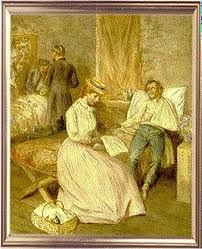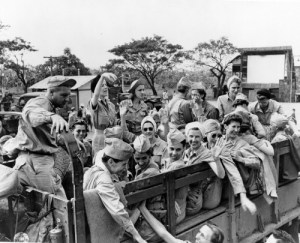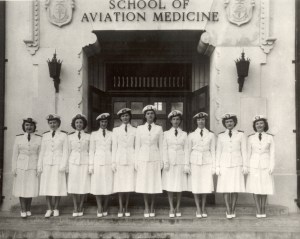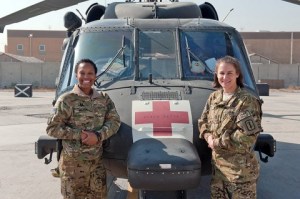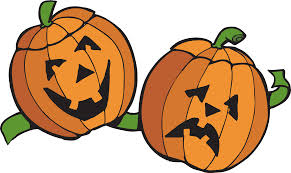The last time I posted for Veterans Day, I wrote about the special relationship between the nurse and the soldier’s they care for. But today, on this Veterans Day, I wanted to recognize all the nurses who have courageously gone to the battlefield, risked their own lives, and in some cases lost their lives. I wanted to delve into the history of the military nurse, their duties, bravery, and unyielding dedication they show to the soldiers in their care.
Florence Nightingale is the most famous military nurse in history. Although not a commissioned soldier, her experiences during the Crimean War helped to pave the way, for what would be in America, The Army Nurse Corps. Florence Nightingale’s presence during wartime led to important changes in hygiene, and sanitary conditions in the hospital wards at the front lines. Those changes were brought back to Great Britain, and America, and had a global impact on hospital care both on the battlefield, and at home.
Since that time women have traditionally served in times of war, but mostly in volunteer corps, not as officers. During the Revolutionary War the Congressional resolution of July, 27, 1775 allowed one nurse for every ten patients in Continental hospitals. Nurses were paid two dollars per month a salary that increased to eight dollars per month by 1777. Nurses were in great demand on the battle field to care for the sick and wounded soldiers, and in 1778 George Washington ordered his commanders to hire as many nurses as possible. Nurses traveling with the army were at risk for injury as well as disease.
The Civil War brought the attention of Dorothea Dix to the forefront. Though not a nurse herself, she was federally appointed as Superintendent of female nurses, and in charge of overseeing the entire nursing staff of the Union Army. From 1861-1865 approximately 3300 nurses served in the Union Army for the grand salary of 12 dollars per month, and food rations. Nurses during this time were at great risk for contracting contagious diseases, as well as the dangers of being on a battle field. Interestingly Louisa May Alcott, author of Little Women, served as a nurse under Dorothea Dix.
By 1898, under the request of the Surgeon General, nurses were contracted for the Spanish-American War, and salaries were increased to 30 dollars per month and one food ration a day. The Army, around this time, was more selective in the hiring of trained nurses, or graduate nurses approved by their nursing school directors. These nurses were called contract nurses, and their training improved the quality of the military nurse. The army later went on to establish the Army Nurse Corps in 1901 which organized nursing under the control of the army, and allotted for three-year terms. At this time only 220 nurses were on active duty.
In 1908 Congress established the first Navy Nurse Corps, though unofficially, nurses had been sailing on navy ships for nearly a century.
In 1917, during WWI, nurses ranks had risen again to 12,186, and were stationed all over the world. The Army opened its own school of nursing in 1918, but then closed it in 1931 due to budget cuts.
In 1920 nurses in the military were given officer rank from 2nd lieutenant to major.
When the Japanese bombed Pearl Harbor on December 7, 1941 the nursing corps had dwindled back down to around 7000. But with a reserve corps already established, and active recruiting, that number quickly went back up to over 12,000 within six months. During WWII black nurses had begun to serve in large numbers, however their units remained segregated both at home and overseas.
In 1942 66 Army Nurses serving in the Philippines, became prisoners of war to the Japanese with the fall of Corregidor. Just prior to the fall, 21 nurses escaped and made it safely to Australia by plane and submarine. Those that remained as POW’s did so for three years before they were liberated. All received the Bronze Star Medal and a promotion of one grade.
In 1943 the first class of Army Nurse Corps flight nurses graduated from the School of Air Evacuation, and basic training camps were established to train nurses for their military experience.
In November of 1943 a plane carrying 13 nurses and 17 soldiers crash landed in Albania behind Nazi enemy lines. All members of the plane survived, and after a nine week, 800 mile journey, managed to escape enemy lines. This story can be found in the book Albanian Escape, written by Army Nurse Agnes Jensen.
In 1947 Nurses were given the opportunity to take a 56 week course in anesthesiology, and a 24 week course in operating room technique and management.
In 1950 the Korean war begins, and nurses are sent to set up hospitals, and Mobile Army Surgical Hospitals (MASH) units.
By 1955 male nurses were authorized commission to serve in the U.S. Army Reserves for assignment to the Army Nurse Corps.
1962 sees the first wave of nurses sent to Vietnam, and 1973 sees the last wave of nurses leaving Vietnam. Nine nurses died in Vietnam during this time period.
In October 1976 a B.S.N. was required for active duty in the Army Nurse Corps.
1990 Nurses are deployed to support troops in Operation Dessert Shield/Dessert Storm
September 11, 2001 America is attacked.
2003 Operation Iraqi Freedom begins.
Nurses on the battlefield, at the front lines, or in route to do their duties put their lives on the line, and as a result over 200 nurses have died in the line of duty. The nurses presence during combat is indispensable. Nurse soldiers, like all soldiers, sacrifice their time, their families, and sometimes their lives to protect the soldiers protecting our freedom. Nurses on the battlefield have always, and will continue to be a voluntary job. Nurses are not part of the draft, though shortly before the end of WWII there was a bill in congress to have nurses as part of the draft, but at the end of the war it was determined that enough nurses had volunteered that a draft was unnecessary for them. Military nurses should be proud of their enduring history. Great women bravely face the darkness of war, carrying with them only their knowledge, skills, and compassion, guided by the light from Florence Nightingale’s lantern. That light continues to shine within the brave men and women of todays modern-day Army, Navy, Air Force and Marine Nurse Corps.
I am proud to be a nurse. I am grateful to all the nurses before me who had the courage to face danger, provide excellent nursing care to our wounded soldiers, and protect the freedoms we hold so dear. I wish all the military nurse corps a peaceful Veterans Day, and a sincere thank-you from this civilian nurse. You are all truly special for what you do. And of course to ALL the Veterans and Active Duty Soldiers a HUGE Thank-you.
God Bless You All!



